Hi all,
Some background: I built this on my family's property in Western Maine, zone 4b, latitude around 45 degrees, and a monstrous average of 46 inches of rain per year. Every mud season there is a small lake in our driveway, so we're looking for a way to sponge up some of that water uphill from it. We planted two blueberry bushes, three or four dozen strawberry plants, one rhubarb plant, one jacob's ladder for nitrogen fixing, a little more clover for more nitrogen fixing, and some oats.
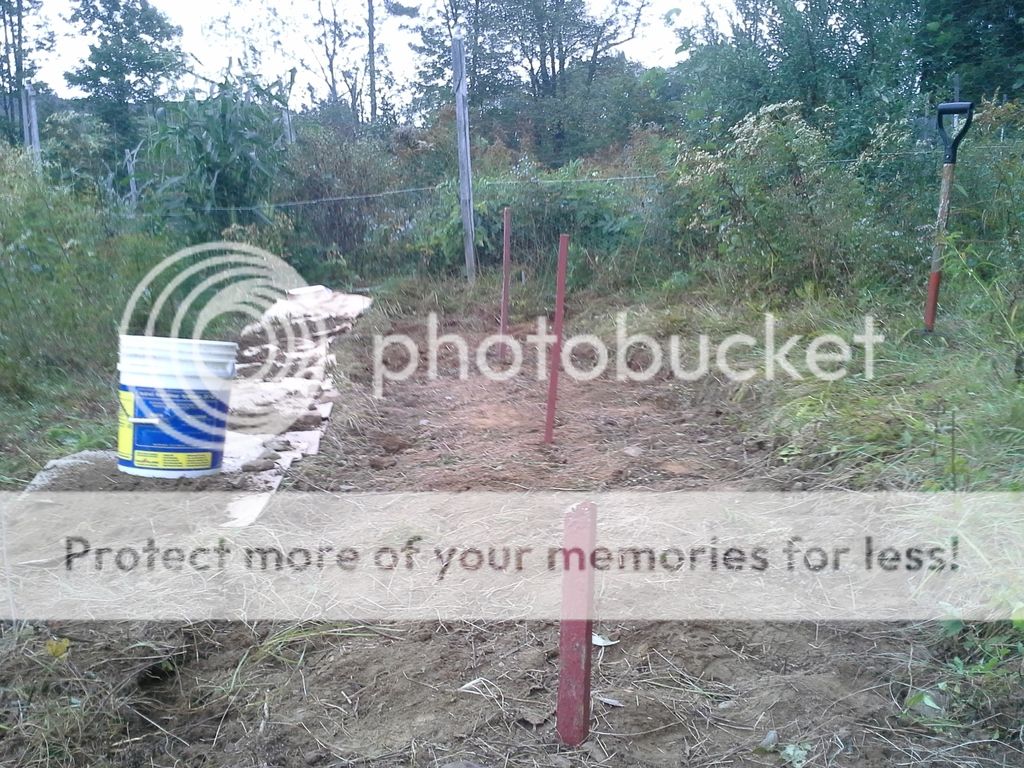
We started by planning an on-contour swale (not just a berm, I'll explain at the end), measuring things out with an A frame, pounding the stakes in, and pulling the grass off with the garden fork to the right. Everything we pulled off got fed to our chickens, along with some Japanese beetle grubs. Systems feeding systems and all that Permaculture jazz. The cardboard on the left is there to make it easier to keep the little topsoil there is easily available for when we throw it on the wood.
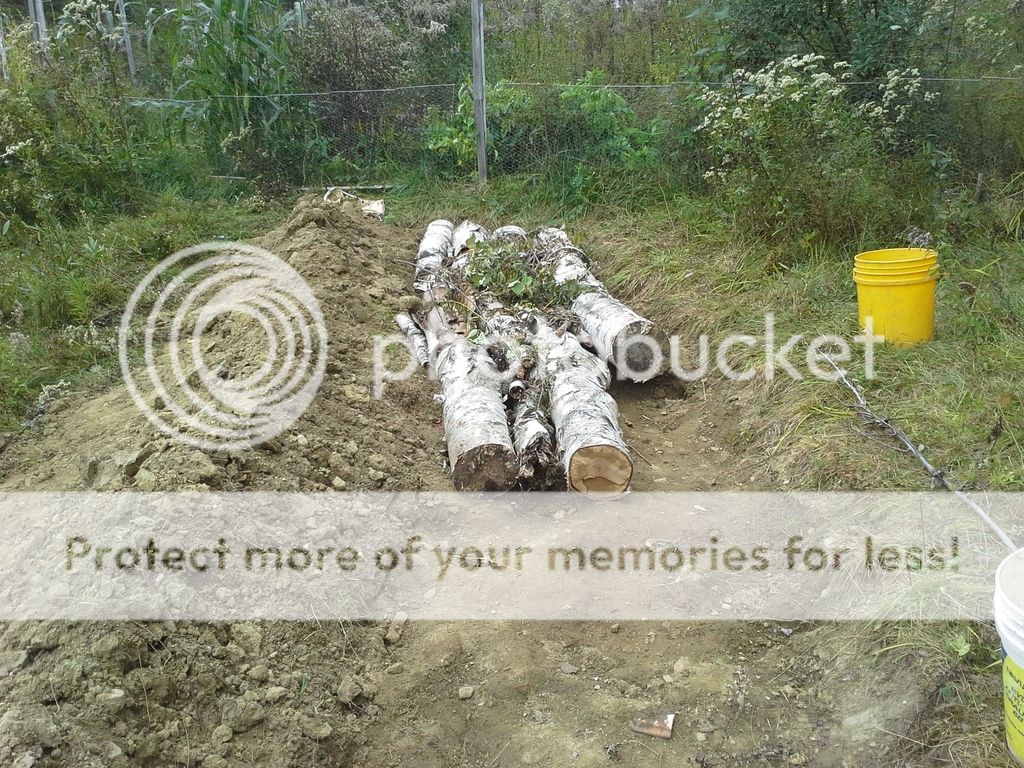
After digging a ditch about one shovel deep, we started lining the bottom of the ditch with some birch wood that was rotting on the property about 500 feet from the berm site. We didn't have any access to heavy earth moving equipment like Sepp Holzer, so we had to saw up the birch into 70 pound logs, load them into our Subaru, and drive them up.
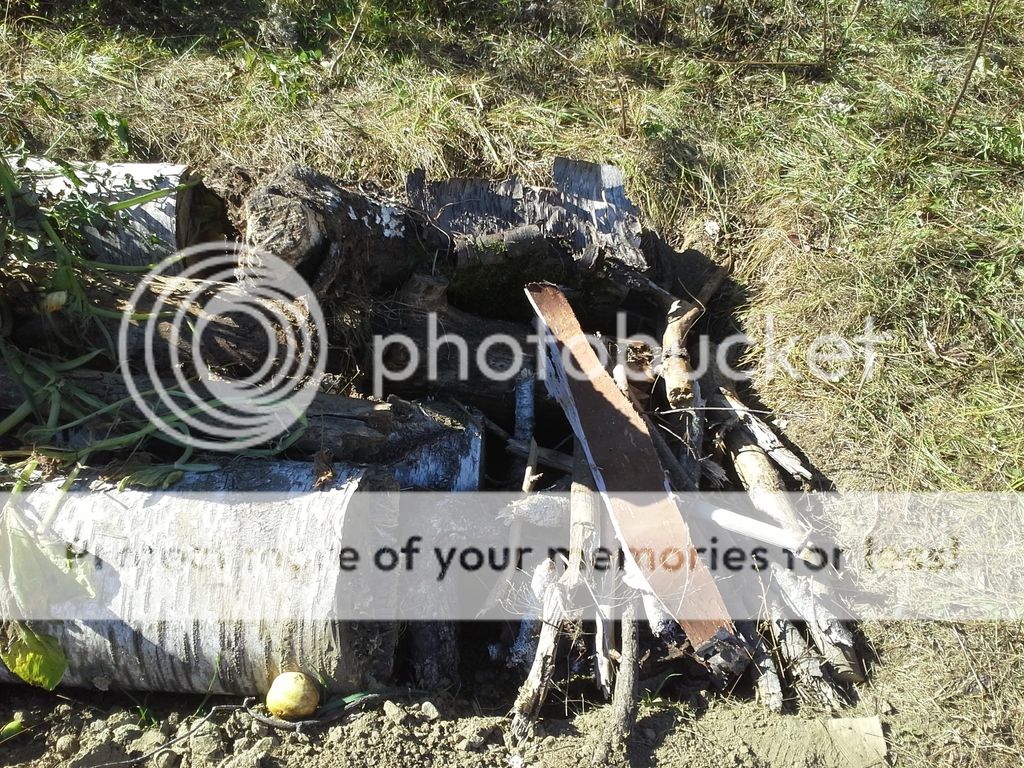
The edge of the berm ditch didn't fit perfectly for the last row of logs, so we filled it in with various pieces of scrap wood. The property actually has a lot of downed and rotting wood of different kinds that you'll see here and in later pictures.
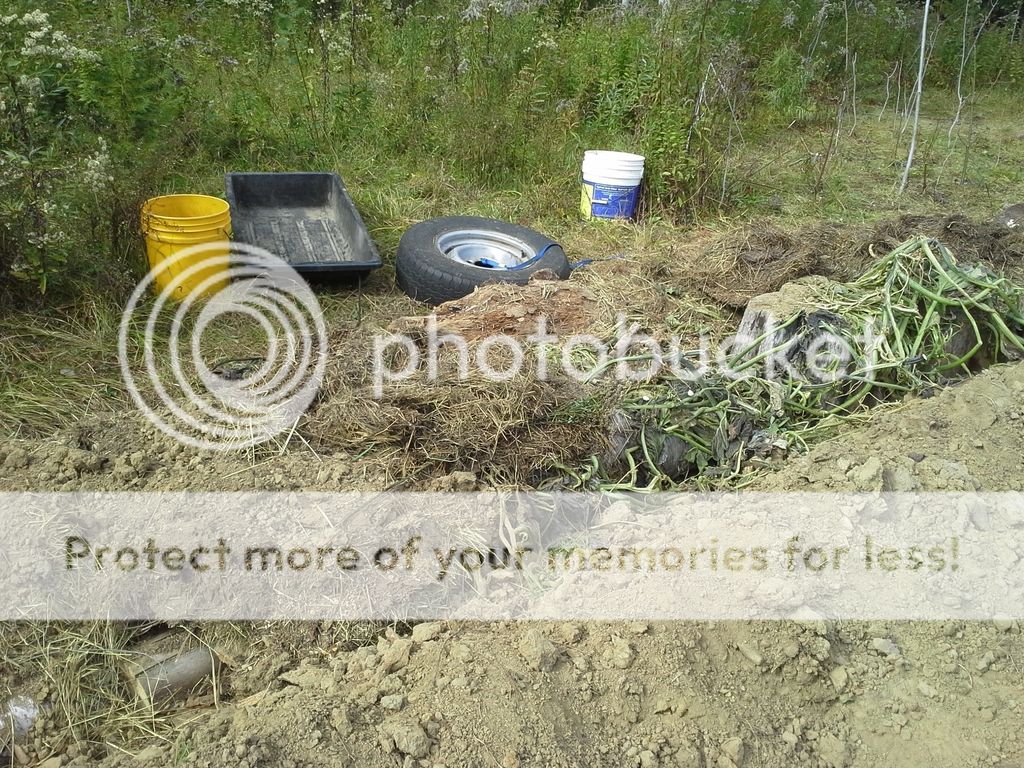
With the first layer of logs down, we started a layer of compost and soil. What you see here is well aged litter from the floors of our chicken coop and goat shed as well as some recently-harvested squash and tomato vines. Not pictured here, but included in this layer of the berm is some wild amaranth and comfrey leaves.
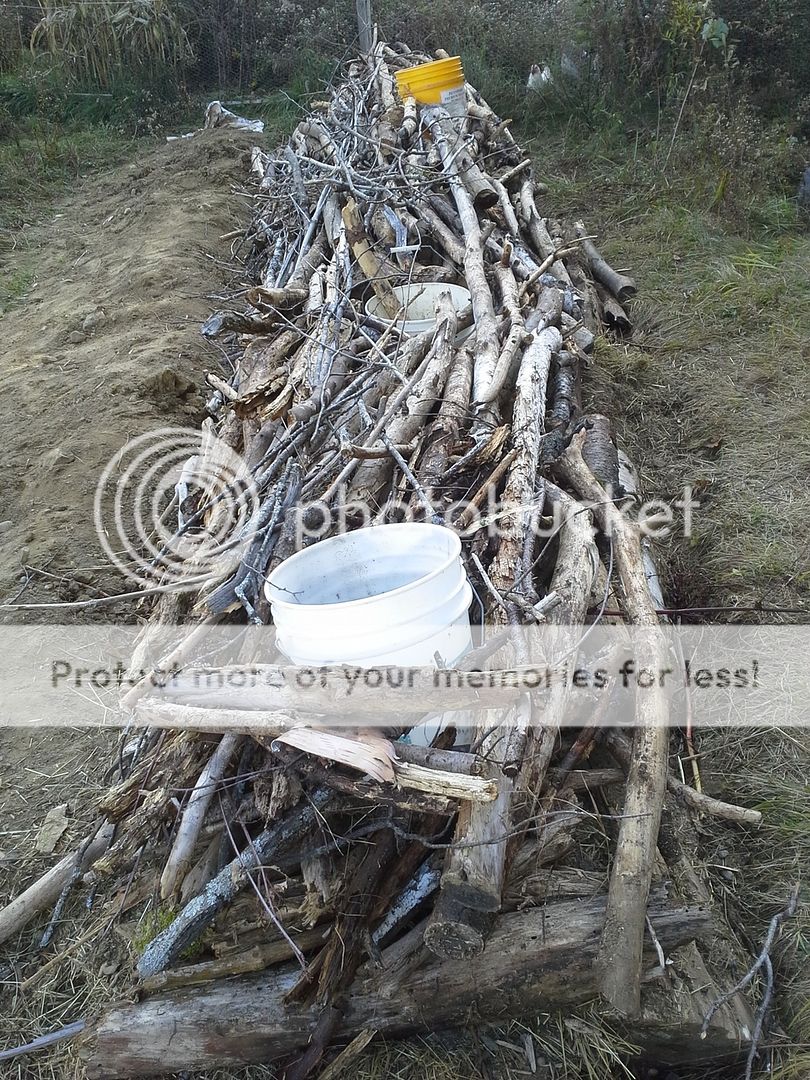
After another layer of wood and compost, we covered the berm with another layer of all the smaller wood we could find. Note the buckets are placeholders for two blueberry bushes on the far end and a hazelnut tree on the near end (the hazelnut tree to be planted spring 2016). Up in the corner, you can see our chickens would come up to the fence to supervise.
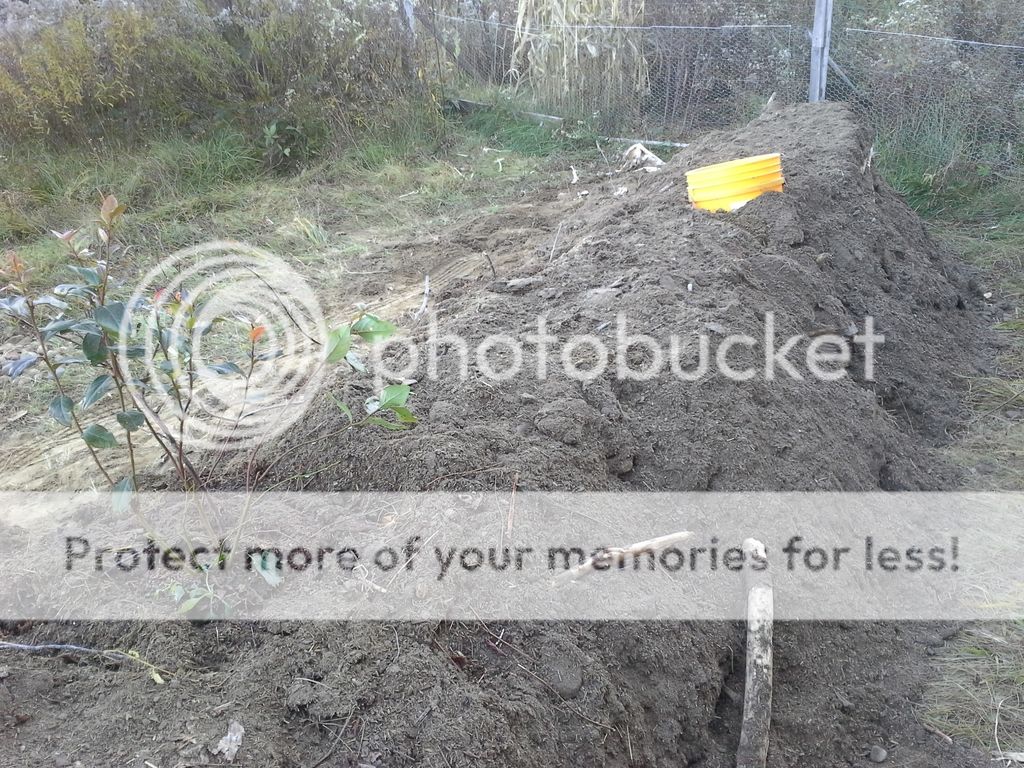
Next we covered the entire berm with dirt from the chicken coop. You can see one of the blueberry plants to the left. One is a Patriot; the other is a Toro. We didn't do much with the right-hand side of the berm, since it doesn't get much sunlight. We planned to plant kale to get it to sprout and leave some roots before the winter, but we didn't have the seeds, so we just threw in some oats. About a month or two after this picture was taken, some have sprouted, but the chipmunks got a lot of them as well.
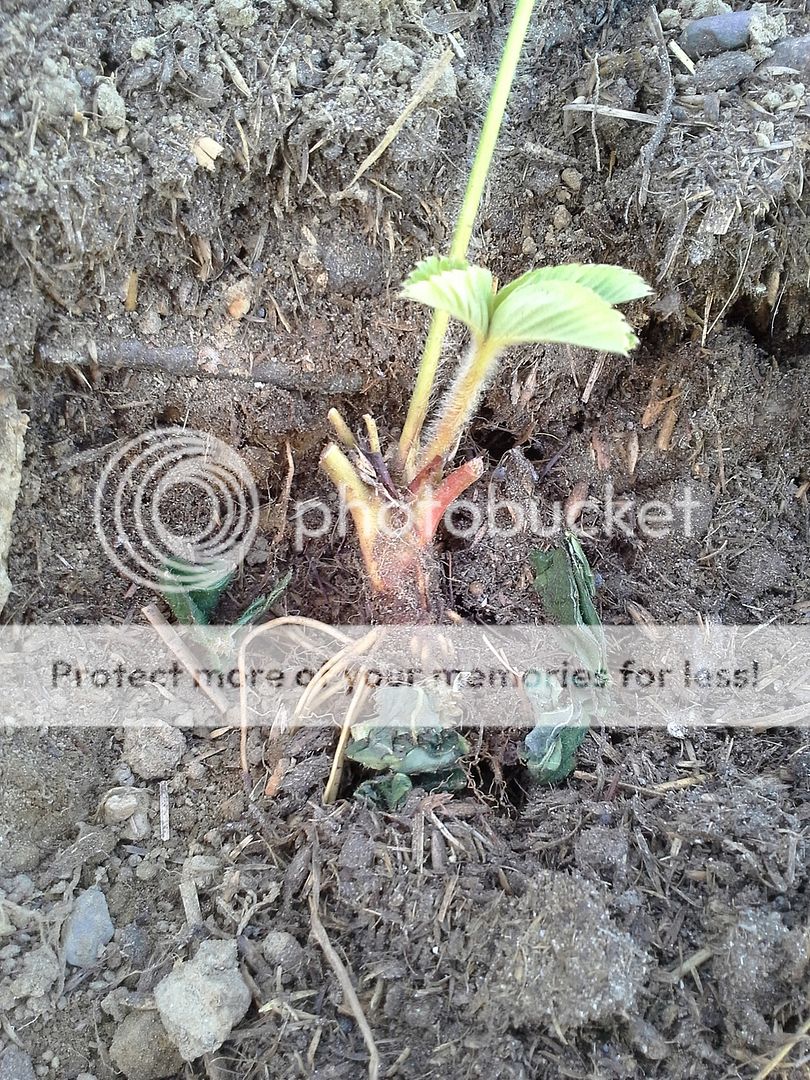
We cut off most of the strawberry plant stems (which made for a nice snack for the goats) when we transplanted them so the root system doesn't have to support all the leaves while it's getting settled. We threw some shreds of comfrey leaves in with the roots to give them some extra minerals...
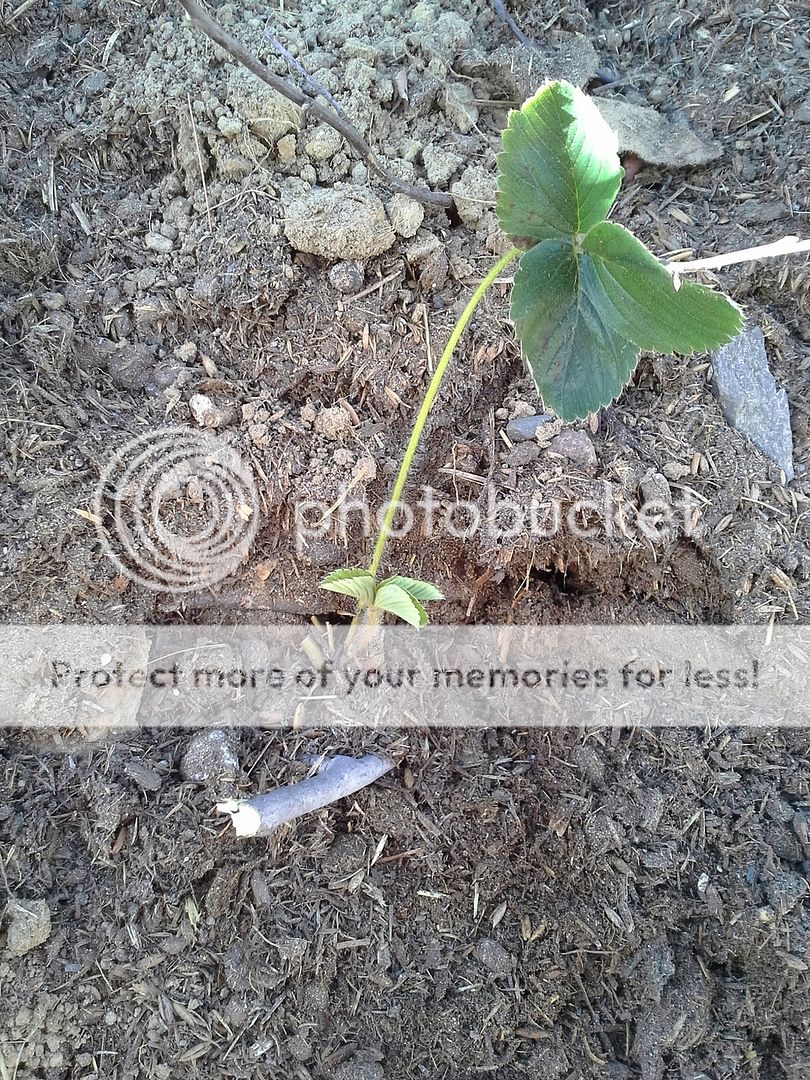
...and nailed the whole plant in with a wood pin.
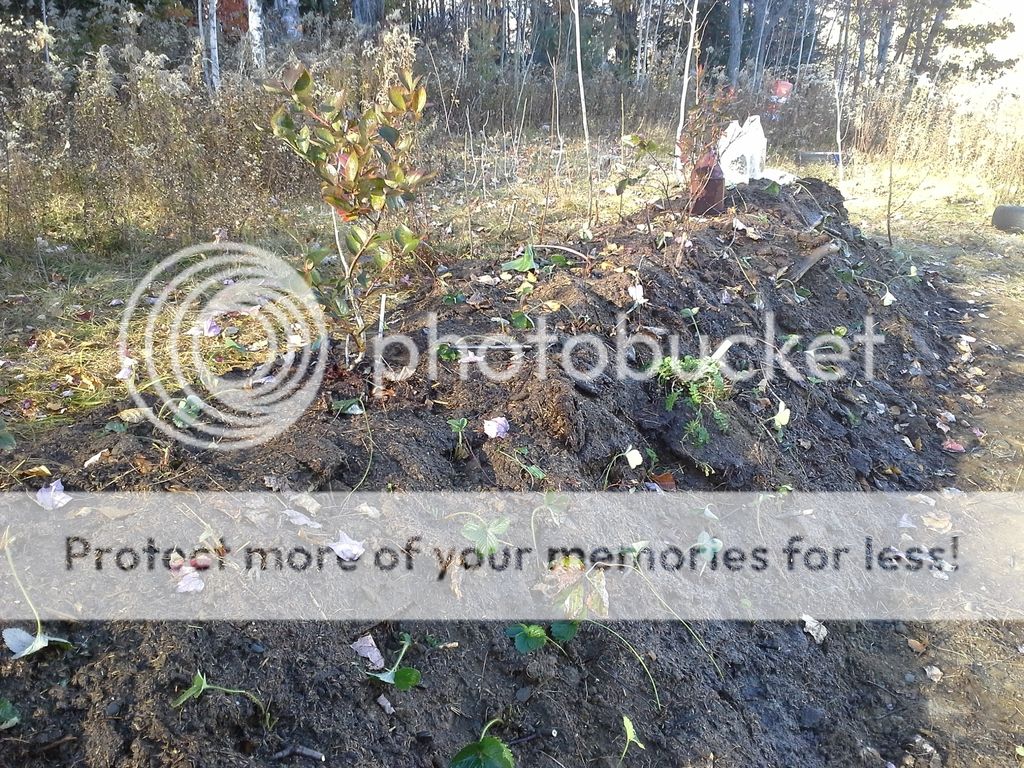
Here you can see the berm with most of the strawberries transplanted, both blueberry plants in, and the jacob's ladder on the side. Note on the far end of the berm we have some leaker jugs to slowly get some more water into the system, though this berm has seen some serious rain since we started.
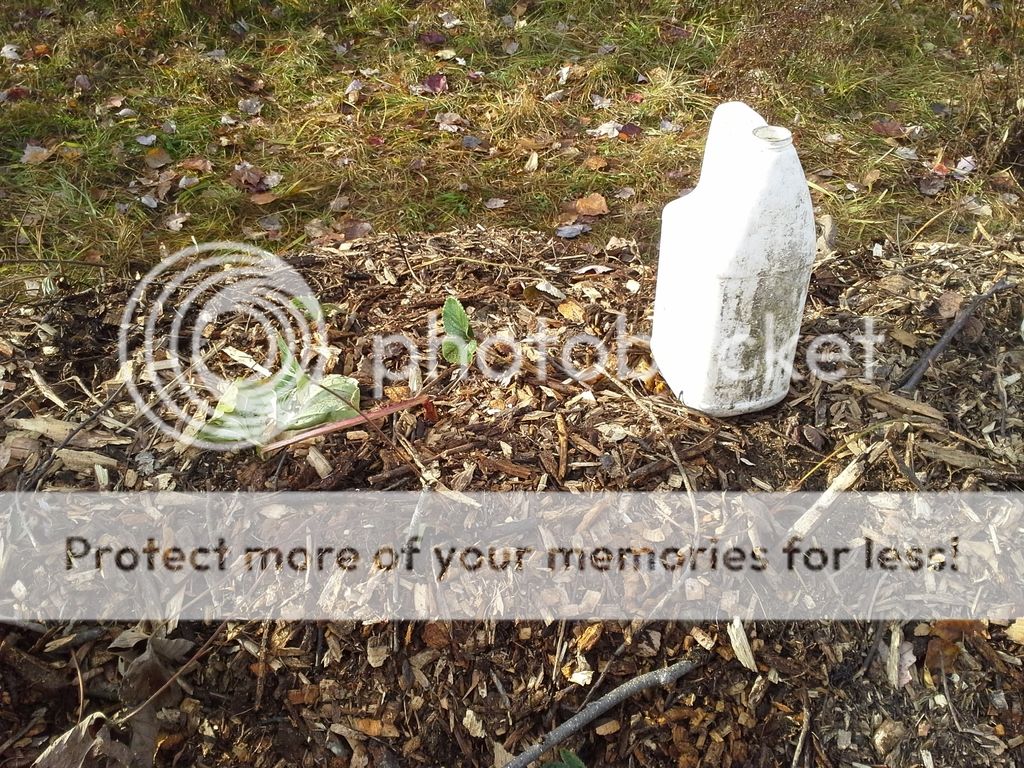
To help hold some of the soil down on such a steep slope, we covered the side of the berm with wood chips. You can also see our rhubarb plant here.
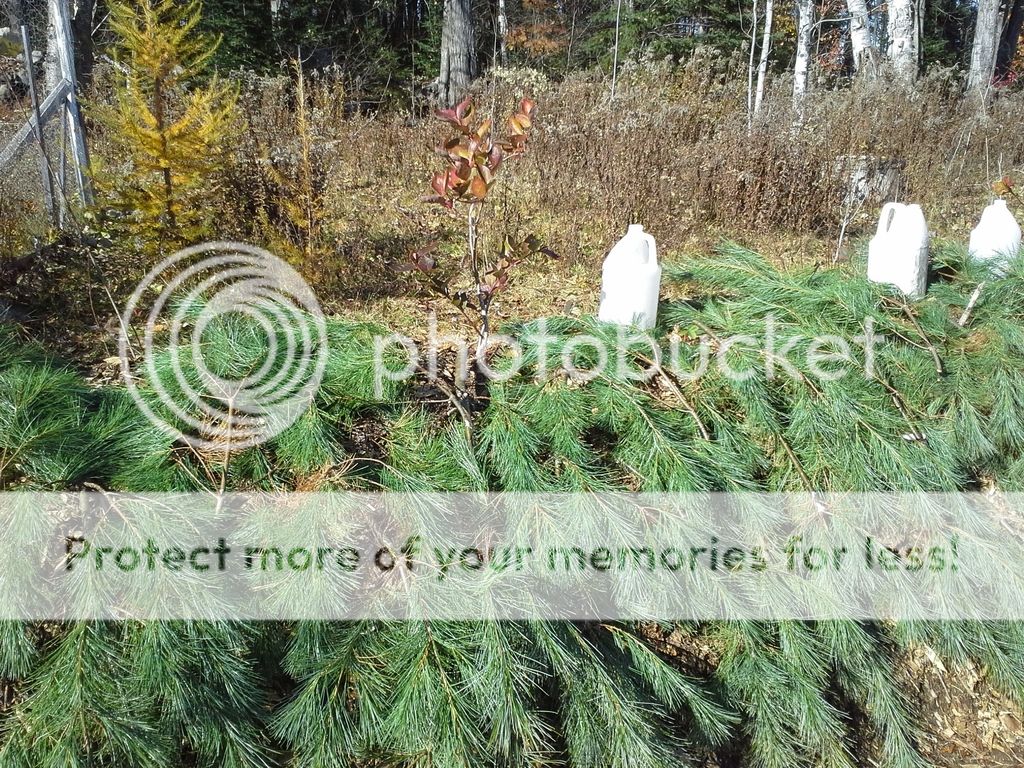
Finally, we covered the berm with pine branches to add some extra protection for the strawberries through the winter. The acid from the pine branches should help neutralize the basic chicken manure they're sitting in as well.
A few more things:
1. The original plan was to build an on-contour swale, but then I stumbled across this article from Permaculture Reflections (
https://www.permaculturereflections.com/when-swales-can-kill/). We haven't tested to make sure that there is leda clay on the property, but I can say that, after mud season ends, there is the occasional basketball-sized sinkhole on the driveway, so perhaps it's not the best idea to run a water lens through here. I might post an update about this.
2. I probably should have covered the strawberry plants with twigs and large wood nails rather than just a layer of wood chips. Given that it has that extra pine layer, how bad is the erosion likely to get?
3. We were thinking about extending the berm beyond where it is now, but it's awful close to our well. Since colliform shows up in chicken droppings, we want some more distance to be sure. Any advice on this?




















